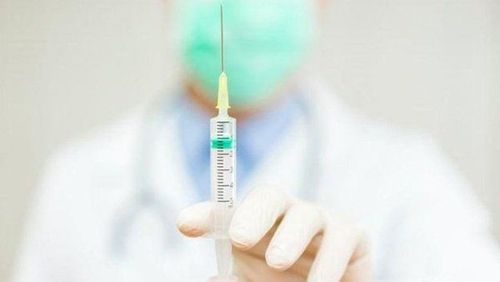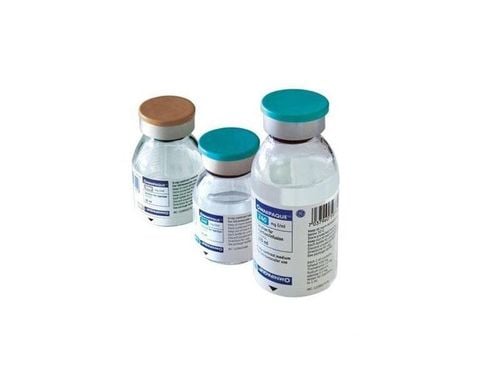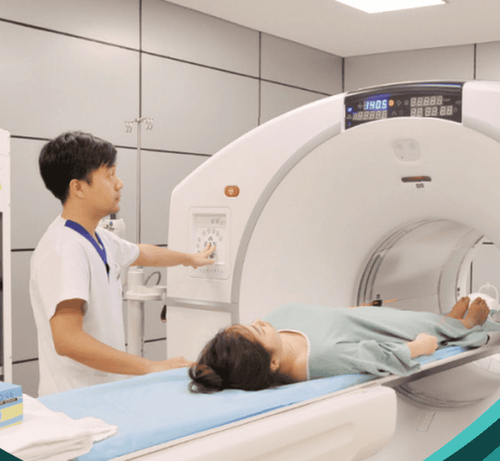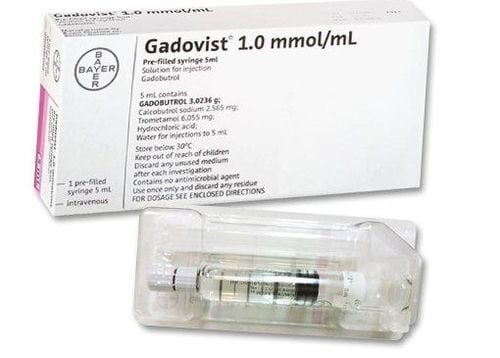This is an automatically translated article.
The article was professionally consulted by MSc Nguyen Van Phan - Doctor of Radiology - Department of Diagnostic Imaging and Nuclear Medicine, Vinmec Times City International Hospital.Computed tomography scan (CT Scan) is a remarkable achievement in diagnostic imaging, an effective support tool for doctors in the diagnosis and prognosis of diseases...
1. What is a computed tomography (CT) scan? Applications of CT
Computed tomography is a technique that uses many X-rays to scan an area of the body in a cross-section, combined with computer processing to produce 2-D or 3-D images of the part to be taken.Currently, CT scanning is being widely applied in clinical practice to:
Detect abnormal problems in cranial neurology such as tumors, brain hematomas, anemia, bleeding, cerebral edema, ... Detect tumors, abscesses, deformities, other pathological images in the head - face - neck, heart, chest, abdomen, pelvis, bones, soft tissues to vascular pathologies . Used to guide surgery, radiation therapy and follow-up after surgery. 3D-CT technique allows accurate assessment of the lesion location in 3D space for good orientation for surgery as well as radiation therapy. Helps to reconstruct 3D images in congenital abnormalities, helping plastic surgeons to better treat birth defects. In order to clarify the image of an abnormal mass, the doctor may prescribe a combination of gastrointestinal and intravenous contrast agents for the most accurate diagnosis.

There are no absolute contraindications for CT scanning. Contraindications related to contrast injection: patients with severe liver dysfunction, severe renal failure, high fever, severe dehydration, allergy to contrast. Patients who are pregnant, especially in the first 3 months of pregnancy (the period when fetal cells are immature, sensitive to X-rays, if exposed to X-rays can cause birth defects).
2. Advantages and disadvantages of computed tomography
2.1. Advantages The picture is clear because there is no overlap. The ability to resolve soft tissue images is higher than that of x-rays. The spatial resolution of bone is high, making it ideal for examining bone pathologies. Fast imaging time, necessary in evaluating emergency diseases and surveying moving parts of the body such as heart, liver, intestines, lungs,... Computerized tomography uses X-rays so it can be used for patients with contraindications to magnetic resonance imaging (MRI): those with pacemakers, fixed hearing aids, metal heart valves or foreign bodies in the body.
3. When is a computed tomography scan with contrast injection?
Contrast are drugs that are injected into the body to better see a tissue or lesion. Contrast contains iodinated contrast agent, which causes attenuated structures or lesions to appear bright white on CT scans, helping to distinguish them from other surrounding structures.
New contrast agents are generally well tolerated. However, there are still some possible side effects when contrast is injected such as: flushing face, nausea and vomiting, itching, hives, chills or fever,... A patient with a real allergy Contact with an iodinated contrast agent produces an injection reaction. Patients and doctors need to be aware of such allergy symptoms so that the next time a contrast agent is needed, avoid using the type that has been allergic to before.
3.1. Indications for contrast injection The majority of CT scans of the abdomen require contrast injection, unless it is known that the cause of renal colic is a ureteral stone. Suspected cases of tumor. Most cases of inflammation and abscess require contrast injection, except pneumonia, which has been diagnosed with certainty and does not need to be differentiated from other diseases. Vascular pathology such as aneurysm, pseudoaneurysm, vascular malformation, arterial dissection,... Some special cases: finding source of supply of isolated lung, assessing reperfusion area of lesion, diagnose the degree of septalization of subacute subdural hematoma,... 3.2. Contraindications for contrast injection Relative contraindications
People with liver failure , heart failure decompensated . People with kidney failure grade III, IV. If an injection is required, the physician should plan the patient's hemodialysis immediately after the contrast is injected. People with multiple myeloma, especially patients with oliguria. If computed tomography is required, fluid should be given to the patient. People with allergies. In cases where a CT scan is required for diagnosis, steroids should be administered to the patient 13.5 and 1 hour prior to the scan. Alternatively, antihistamines can be used and resuscitation facilities available. People with chronic diseases: diabetes, hyperthyroidism, asthma, sickle cell disease. Pregnant.

People with severe dehydration. People who are allergic to iodine.
4. Computerized tomography procedure
4.1. Before CT scan Patient should have all metal objects on the body removed such as: jewelry, hairpins, glasses, watches, metal bras, hearing aids and dentures because they are will cause image noise when shooting. Patients who are pregnant or suspected of being pregnant must notify the medical staff to make an appropriate choice. Patients must inform the doctor if they are suffering from one of the diseases such as diabetes, venous disease, asthma, kidney disease and drug allergies. Patients and relatives need to sign a commitment to inject contrast if contrast injection is required. Patients need to fast before 4-6 hours of contrast injection. Patients can drink moderate amounts of water 2 hours before the CT scan. For an infant or toddler that requires a CT scan, the doctor may put the child to sleep to take pictures of the uninjected organs, if contrast is required, the child should be sedated to prevent the child from moving when the CT scan is required. contrast injection. Baby movements can blur the image, making the diagnosis inaccurate. Depending on where the CT scan is being performed, the patient may be asked to remove the pants, shirt, and shirt provided by the hospital. 4.2. During the CT scan The patient lies supine on the table in the examination room or in some special position required by the diagnosis. The time of computed tomography usually lasts 3 - 5 minutes, in some cases longer (up to 15 - 45 minutes) will be carefully explained to the patient by the medical staff. During the CT scan, the patient needs to lie still. If the chest and abdomen are taken, the patient should hold their breath according to the instructions of the medical staff. Patients with contrast injection often have a burning sensation along the face, neck, chest and can spread to the groin area within a few seconds, the patient still needs to lie still during the scan to get the best results. In some cases of gastrointestinal CT scan, the physician may ask the patient to drink contrast or water to increase the contrast of the digestive tract structure, supporting a better diagnosis.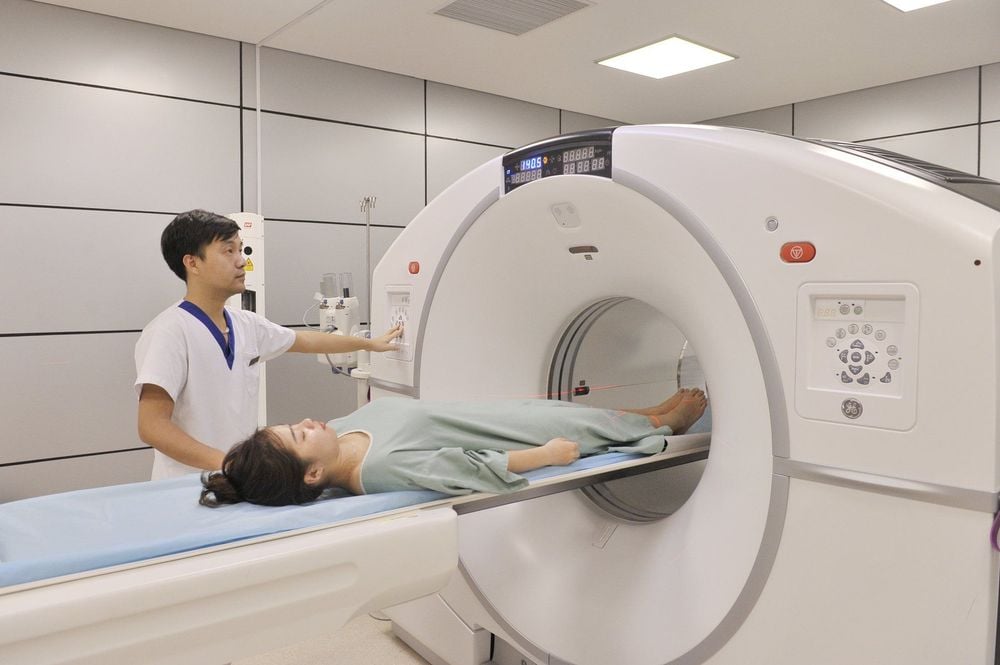
Please dial HOTLINE for more information or register for an appointment HERE. Download MyVinmec app to make appointments faster and to manage your bookings easily.






